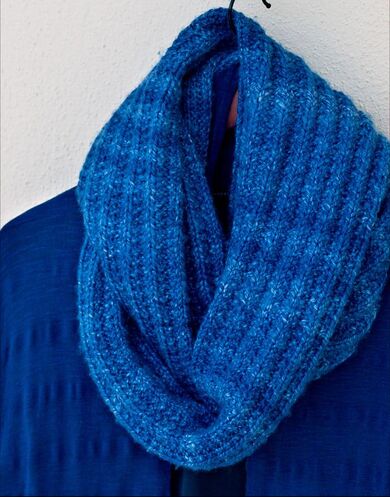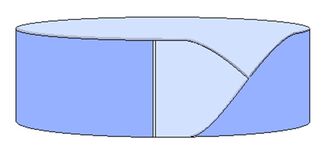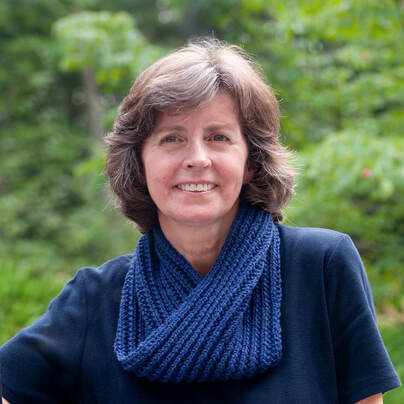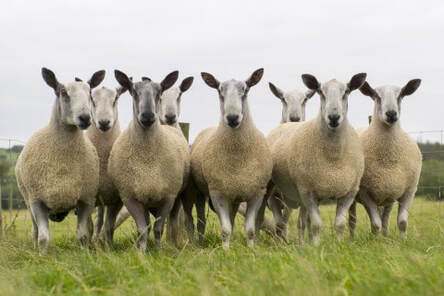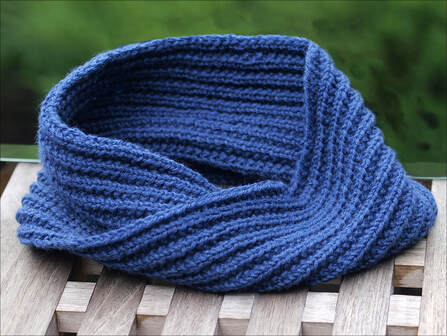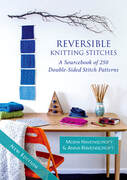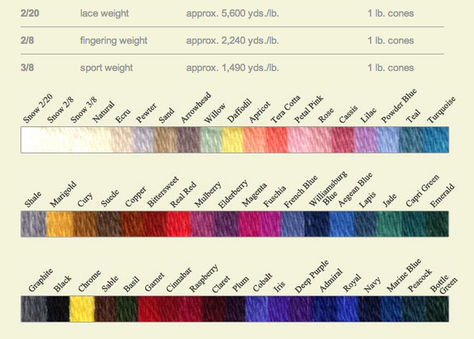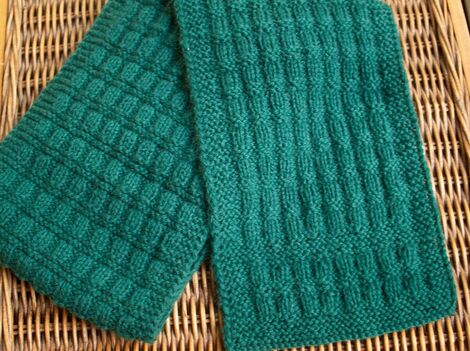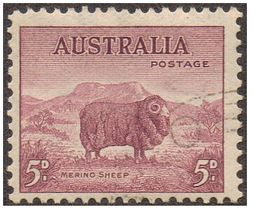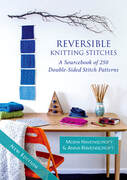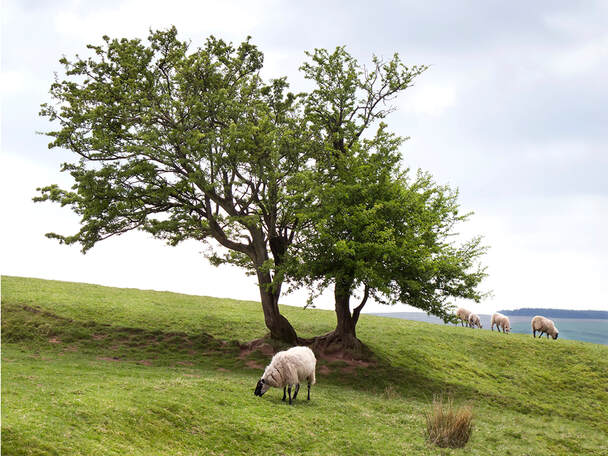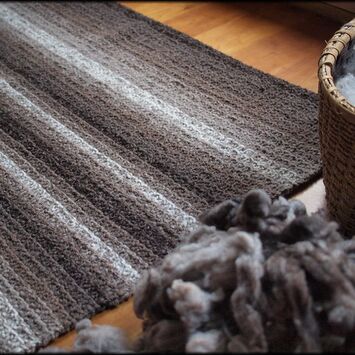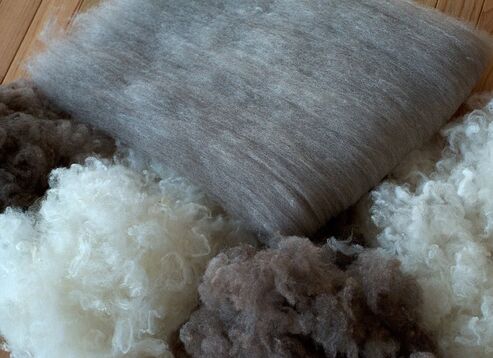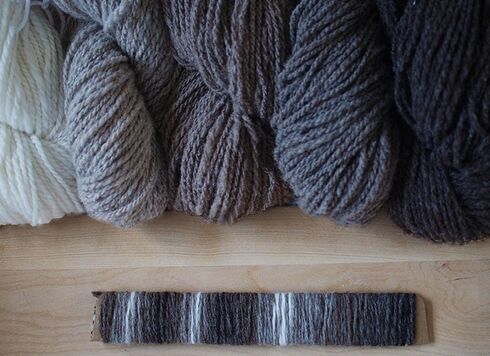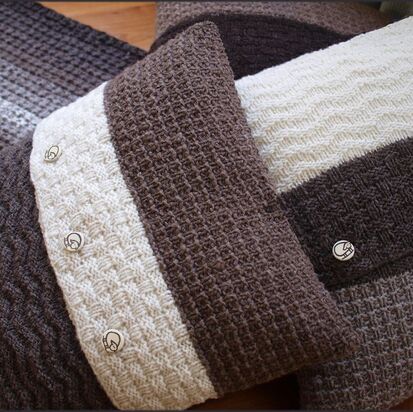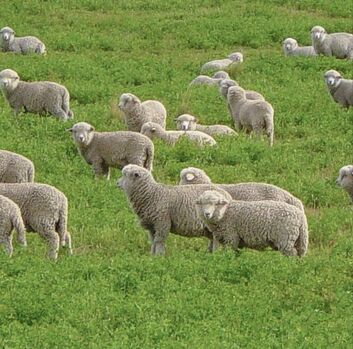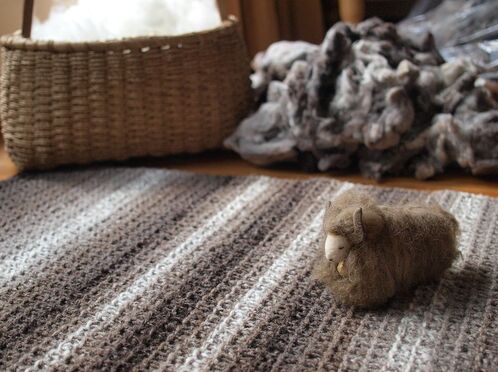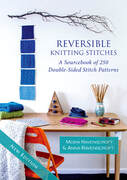You have to admire Mathematicians. They figure out how to do remarkable things like calculate the distance from here to some distant planet, and how to make a three-dimensional object which only has a single side!
We have all done this experiment at school, haven't we — you take a strip of paper, give it a half-twist and fasten it together. Then you start tracing a line with your pencil and before you know it you are back at the beginning and, what's more, you're still on the same side!
Wikipedia informs me that this was discovered by two German Mathematicians, one called August Ferdinand Möbius in 1858, and he gave his name to what we now know as the Mœbius strip.
In the 1930's some Mœbius designs were seen in the work of the fashion designer Madeleine Vionnet. Then in the 1980's, Elizabeth Zimmermann realised that you could work this idea into knitting and that the twist made the item sit beautifully around your neck. The Mœbius Scarf was born.
These have become high fashion items over the last few years and wonderfully oversized versions can be seen in all the leading magazines. Referred to by their other name "Infinity Scarves", they have been featured on catwalks, runway shows and television programmes.
Wikipedia informs me that this was discovered by two German Mathematicians, one called August Ferdinand Möbius in 1858, and he gave his name to what we now know as the Mœbius strip.
In the 1930's some Mœbius designs were seen in the work of the fashion designer Madeleine Vionnet. Then in the 1980's, Elizabeth Zimmermann realised that you could work this idea into knitting and that the twist made the item sit beautifully around your neck. The Mœbius Scarf was born.
These have become high fashion items over the last few years and wonderfully oversized versions can be seen in all the leading magazines. Referred to by their other name "Infinity Scarves", they have been featured on catwalks, runway shows and television programmes.
The pattern I am featuring today is called the Sawston Cowl and Infinity Scarf and there are two different versions. The long scarf in the photo at the top of this page is warm and cozy and can be worn open with a nice "pocket" for your hands like a muffler. Alternatively, it can be doubled up to give a wonderful sense of warmth around your neck on a cold day.
The shorter cowl version gives a wonderfully cozy light-weight covering for your neck and is easy to slip into a pocket or pop over your head as you head home.
Both are especially comfortable to wear as they are made from one of the softest wool fibres around, the Bluefaced Leicester, or BFL for short.
The shorter cowl version gives a wonderfully cozy light-weight covering for your neck and is easy to slip into a pocket or pop over your head as you head home.
Both are especially comfortable to wear as they are made from one of the softest wool fibres around, the Bluefaced Leicester, or BFL for short.
The BFL sheep breed was developed in the North of England over the 18th and 19th centuries and became acknowledged as a separate breed in the early 20th century. Now it is one of the most highly prized breeds in England and is also well represented in a number of other countries.
The fibre is soft and fine, measuring about 22-25 microns (close to the range of merino, which is usually about 18-24 microns). The wool is lustrous and items made from this yarn drape beautifully. The fibres have very smooth scales on the surface so the wool does not felt easily and is comfortable to wear. It also takes dye very well so good strong colours can be obtained.
One lovely BFL yarn that I like to work with is West Yorkshire Spinner's "WYS Bluefaced Leicester DK”. This is a wonderful yarn and I have used it many times, especially to make items for people who usually find wool itchy to wear.
The fibre is soft and fine, measuring about 22-25 microns (close to the range of merino, which is usually about 18-24 microns). The wool is lustrous and items made from this yarn drape beautifully. The fibres have very smooth scales on the surface so the wool does not felt easily and is comfortable to wear. It also takes dye very well so good strong colours can be obtained.
One lovely BFL yarn that I like to work with is West Yorkshire Spinner's "WYS Bluefaced Leicester DK”. This is a wonderful yarn and I have used it many times, especially to make items for people who usually find wool itchy to wear.
And now for Wovember, here are some facts about the Bluefaced Leicester breed:
If you haven’t tried Bluefaced Leicester wool yet, try knitting with some this month! You're in for a treat!
For more details of the Sawston Cowl and Infinity Scarf knitting pattern, please click here. The pattern is available for immediate download from the site.
I hope you’ve enjoyed this mini exploration of some of the many sheep breeds available for knitters to use. I’ll be back next time with a topic that vexes many people – when do you join in a new ball of yarn?
Until then – Happy BFL knitting!
Moira
- The Bluefaced Leicester is one of three Leicester breeds, which also includes Border Leicesters and Leicester Longwool sheep.
- The BFL sheep is so named because the skin on the face has a blue tinge. The wool is white!
- They are large sheep, with adult ewes weighing about 80Kg (175 lbs) and rams about 115Kg (250 lbs). However, their average fleece weighs only 2-3 Kg (4-6 lbs).
If you haven’t tried Bluefaced Leicester wool yet, try knitting with some this month! You're in for a treat!
For more details of the Sawston Cowl and Infinity Scarf knitting pattern, please click here. The pattern is available for immediate download from the site.
I hope you’ve enjoyed this mini exploration of some of the many sheep breeds available for knitters to use. I’ll be back next time with a topic that vexes many people – when do you join in a new ball of yarn?
Until then – Happy BFL knitting!
Moira
Last blogpost: Two strands held together... Next Up: At the end of a row . . . Our book: Reversible Knitting Stitches My Website: www.wyndlestrawdesigns.com |
Keywords: Patterns/Women’s Scarves & Wraps,
scarf, scarves, wrap, knitted scarf, reversible scarf, reversible stitch, knitting stitch, Blue Faced Leicester sheep, BFL, wool,
scarf, scarves, wrap, knitted scarf, reversible scarf, reversible stitch, knitting stitch, Blue Faced Leicester sheep, BFL, wool,
